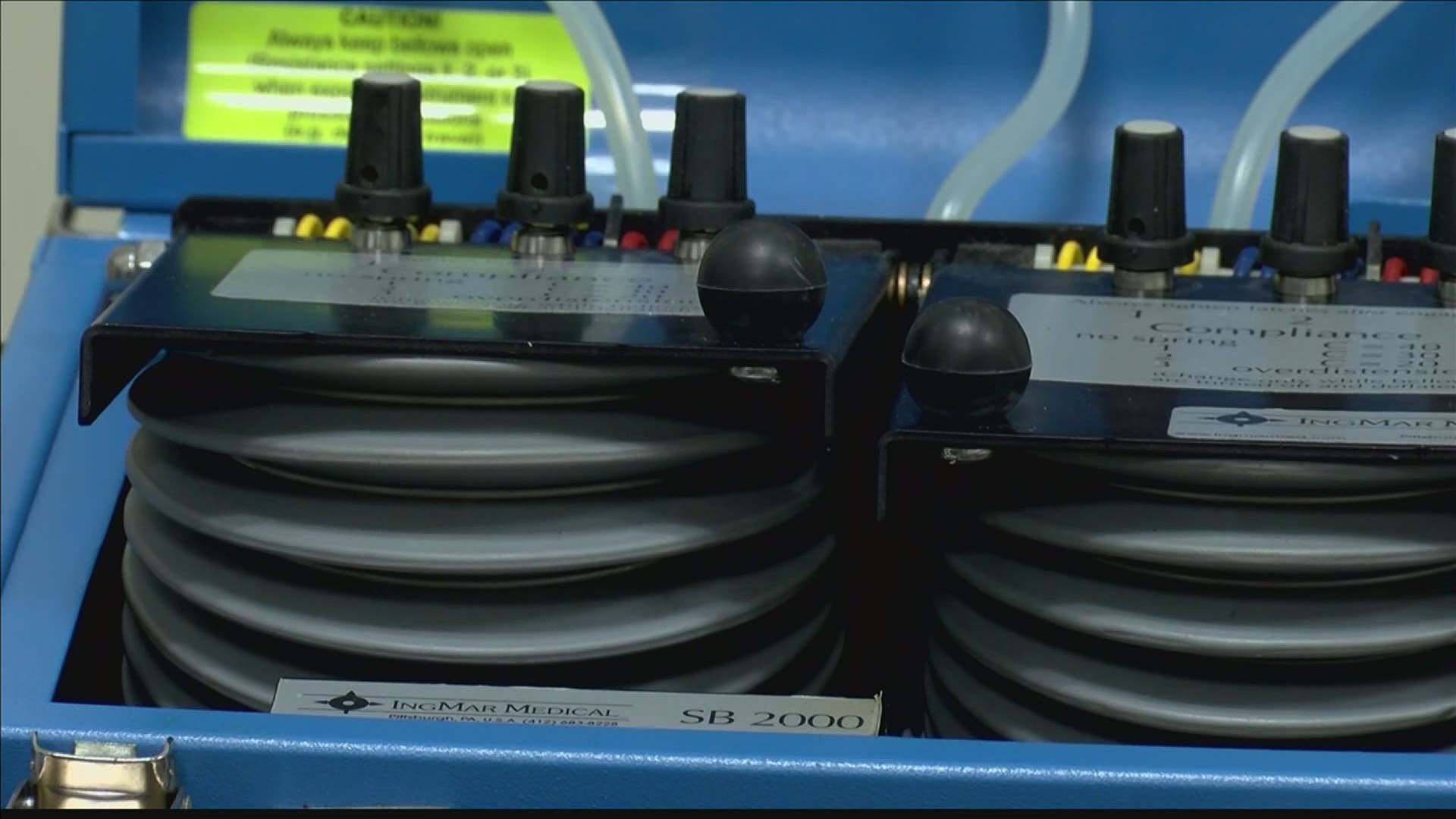BIRMINGHAM, Ala. — Editor's note: This article was originally published by the University of Alabama at Birmingham.
“First, we insert a tube through your mouth or nose directly into your trachea. This tube allows the machine to push air into your lungs and forces you to inhale. You can’t swallow, speak or cough. You might be sedated, if you are lucky. But you won’t be sedated the whole time.”
Those words come from Jerry King, RRT, an assistant professor in the School of Health Professions, at the University of Alabama at Birmingham. He teaches students at UAB how to use a ventilator.
“It’s a machine that breathes for you,” King said. “Usual breathing uses negative pressure, meaning you open your mouth and air flows in. The machine uses positive pressure to force air into your lungs. Think of standing in front of a leaf blower.”
Ventilators, often referred to as life support machines, are used in intensive care units for patients who cannot breathe on their own. Many of the sickest patients with COVID-19 need the assistance of a ventilator to survive. Throughout the course of the pandemic, about half of the patients in UAB’s COVID-19 ICU have been on a ventilator.
“It becomes an external set of lungs,” said Kathy Langley, MSN, R.N., an instructor in the UAB School of Nursing. “With the virus causing so much damage to the lungs, the ventilator allows the patient to rest and to heal while the machine does the work of the lungs.”
King says the machine typically blows air in for one second, than pauses for roughly three seconds to allow the patient to exhale, then repeats for as long as the machine is in use. And that could be a long time.
“In COVID-19 cases, ventilators are often needed for weeks, sometimes for over a month,” King said. “And there are risks to having the tube in your lung, as it can cause damage to the vocal cords, the trachea or the lungs.”
King says, while a ventilator might save your life, it is certainly not a pleasant experience. And while a young and healthy person with COVID-19 might not need a ventilator, there are others who will.
“You don’t want to be the carrier that puts somebody in the hospital who needs a vent,” King said.
UAB Hospital continues to urge the community to maintain social distancing, avoid large gatherings, wash their hands frequently and wear a face covering.
IN OTHER NEWS: Huntsville locals express concerns for mandatory mask order
PEOPLE ARE ALSO READING:

